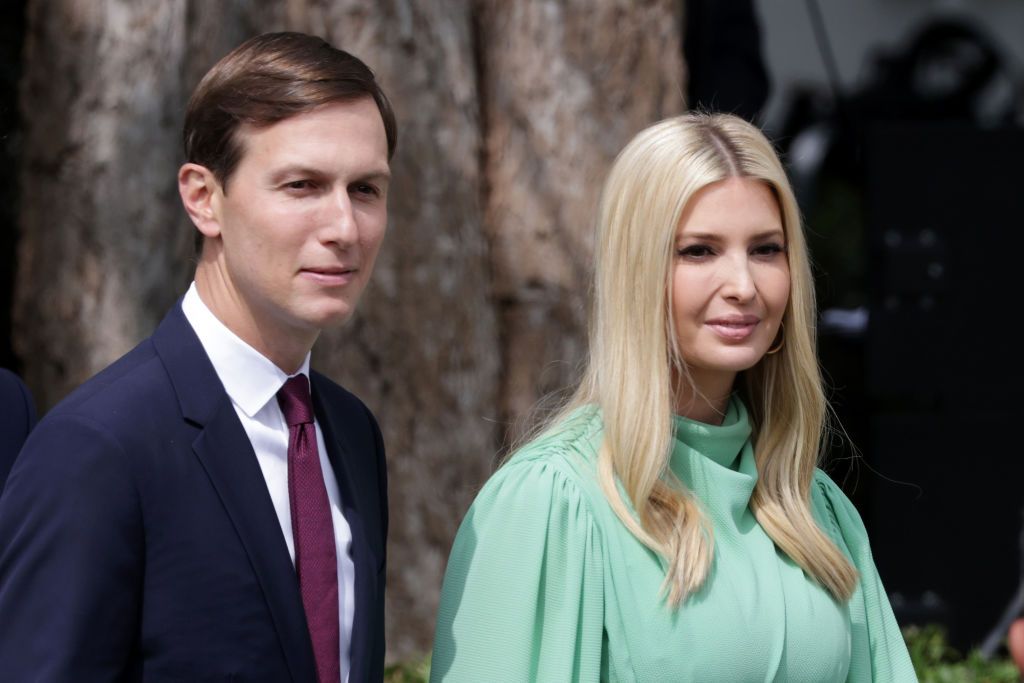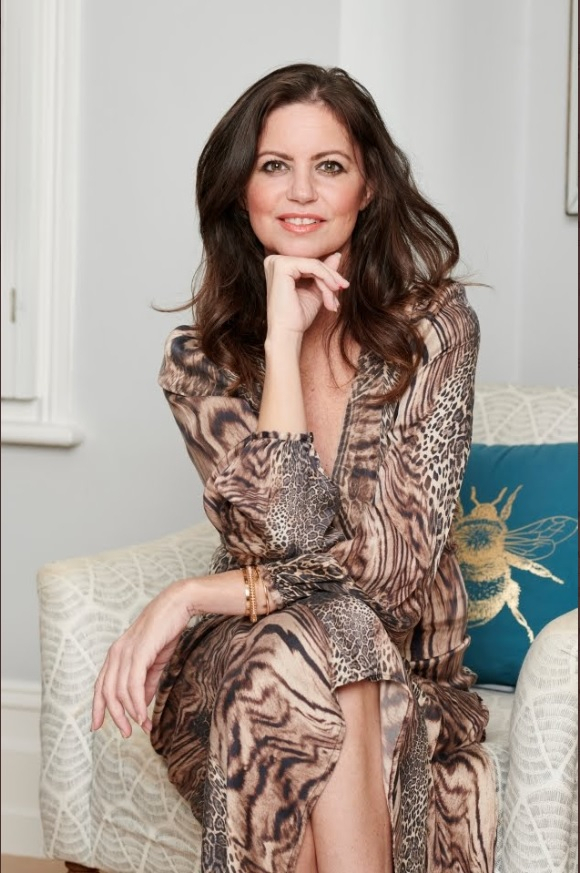[ad_1]
Certain movie scenes etch themselves into our collective memory, leaving an indelible mark on the fabric of popular culture. These moments, woven into the narrative tapestry of film history, encapsulate the power of visual storytelling and the emotional resonance that transcends the boundaries of time and space.
The list of most memorable movie scenes is as diverse as the cinematic landscape itself, spanning genres and decades. One such iconic moment is the “I am your father” revelation in “Star Wars: The Empire Strikes Back,” a twist that redefined the possibilities of storytelling in the sci-fi genre.
Equally unforgettable is the shower scene from Alfred Hitchcock’s “Psycho,” a chilling sequence that forever altered the horror genre. These scenes not only captivate with their narrative brilliance but also embed themselves in the collective consciousness of film enthusiasts worldwide.
As we journey through these 40 most memorable movie scenes, we encounter moments of sheer cinematic magic that linger long after the credits roll.
40 Most Memorable Movie Scenes
40.
Selma (2014): “I Have a Dream” Speech

In the pivotal “I Have a Dream” scene from the film Selma (2014), David Oyelowo delivers a hauntingly powerful portrayal of Martin Luther King Jr. The actor channels King’s charismatic oratory, bringing to life the iconic speech delivered on the steps of the Lincoln Memorial during the 1963 March on Washington.
Oyelowo’s performance is a poignant reminder of the struggle for civil rights, capturing the essence of King’s dream with profound conviction. The scene is unforgettable, not only for its historical significance but also for Oyelowo’s compelling portrayal, which earned him critical acclaim.
39.
Star Wars Episode V: The Empire Strikes Back (1980): “I am your father” Scene

Undoubtedly one of the most iconic moments in cinematic history, the “I am your father” scene from Star Wars Episode V: The Empire Strikes Back is etched into the collective memory of audiences worldwide.
Mark Hamill’s Luke Skywalker confronts the menacing Darth Vader, played by David Prowse, only to discover the shocking truth about his parentage. The revelation is a masterstroke by director Irvin Kershner and writer George Lucas, forever altering the Star Wars narrative.
The emotional intensity of this scene, coupled with the famous line, transcends the sci-fi genre, making it an indelible part of film history and elevating the performances of Hamill and Prowse to legendary status.
38
Raiders of the Lost Ark (1981): The Pit of Souls Scene

The Pit of Souls scene from Raiders of the Lost Ark stands out as a hallmark of cinematic adventure. In this iconic sequence, Harrison Ford’s Indiana Jones confronts a pit filled with slithering snakes in his quest to recover the Ark of the Covenant.
Directed by Steven Spielberg, the tension and excitement are palpable as Ford navigates the treacherous terrain, epitomizing the essence of the swashbuckling archaeologist. The unforgettable scene is a testament to Ford’s charisma and Spielberg’s directorial prowess, solidifying Raiders of the Lost Ark as a classic in the action-adventure genre.
37.
Jerry Maguire (1996): “Show me what you got” Scene

Cameron Crowe’s Jerry Maguire features a memorable scene where Tom Cruise, playing the titular character, delivers the impassioned “Show me the money!” line. As a sports agent navigating the cutthroat industry, Cruise’s performance is magnetic, capturing the essence of desperation and determination.
Co-star Cuba Gooding Jr., who plays the football player demanding the payday, adds infectious energy to the scene. The dynamic between Cruise and Gooding Jr. creates a perfect storm of humor and intensity, making the “Show Me the Money!” scene an enduring moment in sports cinema. The actors’ chemistry and the scene’s cultural impact contribute to Jerry Maguire’s lasting legacy.
36.
The Lord of the Rings: The Fellowship of the Ring (2001): “You Shall Not Pass!” Scene
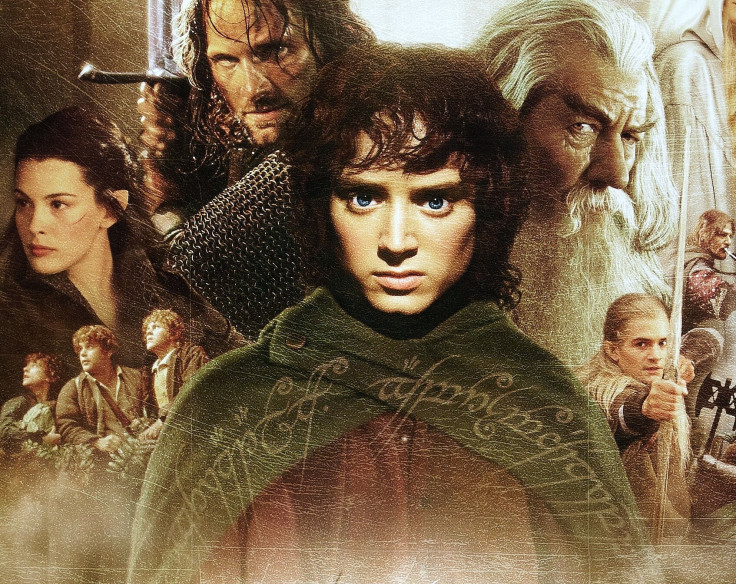
Directed by Peter Jackson, The Fellowship of the Ring is the first installment in the epic Lord of the Rings trilogy. In the iconic “You Shall Not Pass!” scene from Peter Jackson’s 2001 epic, “The Lord of the Rings: The Fellowship of the Ring,” Gandalf confronts the Balrog on the Bridge of Khazad-dûm.
Sir Ian McKellen’s commanding presence and John Howe’s awe-inspiring visuals converge to create a cinematic masterpiece. Gandalf’s defiant stand symbolizes the Fellowship’s struggle against an overwhelming darkness.
The wizard’s fierce determination echoes through the cavernous halls as he thunders the iconic line, transcending the screen to become a cultural touchstone. The visual effects, coupled with Howard Shore’s stirring score, elevate the scene into a cinematic legend, embodying the epic scale and emotional depth that defines the entire trilogy.
35.
Get Out (2017): “Get Out!” Scene

In the “Get Out!” scene from Jordan Peele’s 2017 thriller, “Get Out,” tension crescendos as Chris Washington, brilliantly portrayed by Daniel Kaluuya, discovers the horrifying truth about the Armitage family’s sinister intentions.
Set in the sunken place, a hypnotic void representing a loss of agency, Chris fights mental paralysis to escape the clutches of his captors. The scene brilliantly blends suspense, social commentary, and horror. The chilling repetition of “Get out!” serves as a haunting mantra, embodying the film’s exploration of racial exploitation.
Kaluuya’s raw, emotional performance and atmospheric cinematography amplify the sense of dread, making this moment a standout in a film that deftly weaves societal critique with a gripping narrative. It’s a powerful cinematic moment that lingers long after the credits roll.
34.
Good Will Hunting (1997): “I’m Not Gonna Hurt You” Scene

Directed by Gus Van Sant, Good Will Hunting stars Matt Damon as the titular character, a brilliant but troubled janitor at MIT. In the “I’m not gonna hurt you” scene, Robin Williams, in an Oscar-winning performance, delivers a poignant and empathetic portrayal of therapist Sean Maguire.
The scene showcases the emotional depth of the characters as Sean breaks through Will’s tough exterior. Good Will Hunting received critical acclaim for its screenplay, written by Damon and Ben Affleck, and the performances of its cast, including Williams, Damon, and Minnie Driver.
33.
Forrest Gump (1994): “Life is Like a Box of Chocolates” Scene

Directed by Robert Zemeckis, Forrest Gump is a heartwarming and iconic film featuring Tom Hanks as the titular character. The “Life is like a box of chocolates” scene occurs when Forrest reflects on his life while sitting on a park bench.
Hanks’ portrayal of the lovable and simple-minded Forrest, coupled with the profound wisdom encapsulated in the famous line, has made this scene one of the most quoted and cherished moments in cinematic history. Forrest Gump received widespread acclaim and won six Academy Awards, including Best Picture and Best Actor for Hanks.
32.
Citizen Kane (1941): “Rosebud” Scene
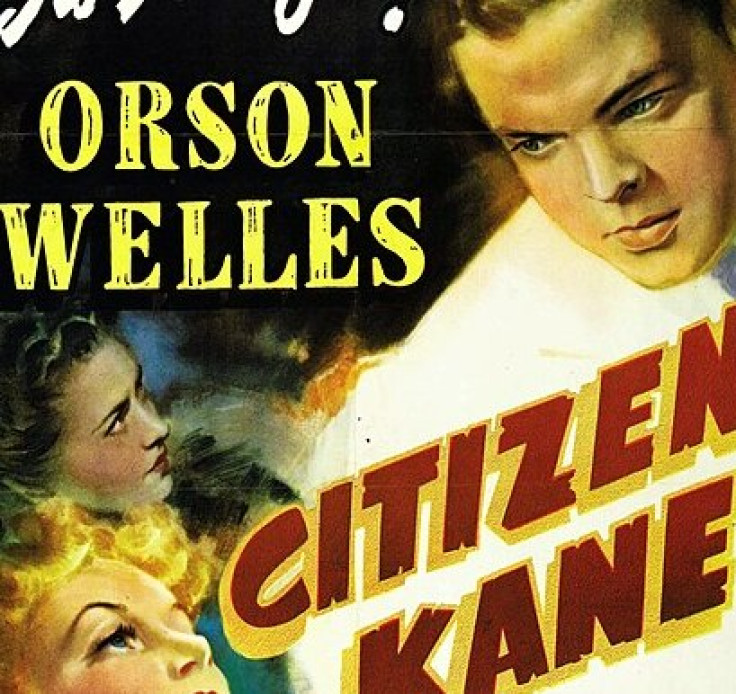
Directed by and starring Orson Welles, Citizen Kane is a masterpiece often regarded as one of the greatest films ever made. “Citizen Kane,” the narrative unfolds around the mysterious dying words of Charles Foster Kane.
As Kane takes his last breath in the sprawling Xanadu, a snow globe slips from his lifeless hand, shattering on the floor. The utterance of “Rosebud” triggers a quest for the elusive meaning of Kane’s life, propelling the narrative into a labyrinth of memories.
Cinematographically innovative for its time, the scene’s symbolism and narrative structure add layers of complexity to the film. “Rosebud” becomes an enigmatic symbol, inviting the audience to ponder the essence of a man’s existence and the elusive pursuit of happiness amid wealth and power.
31.
Jaws (1975) – “We’re gonna need a bigger boat” scene
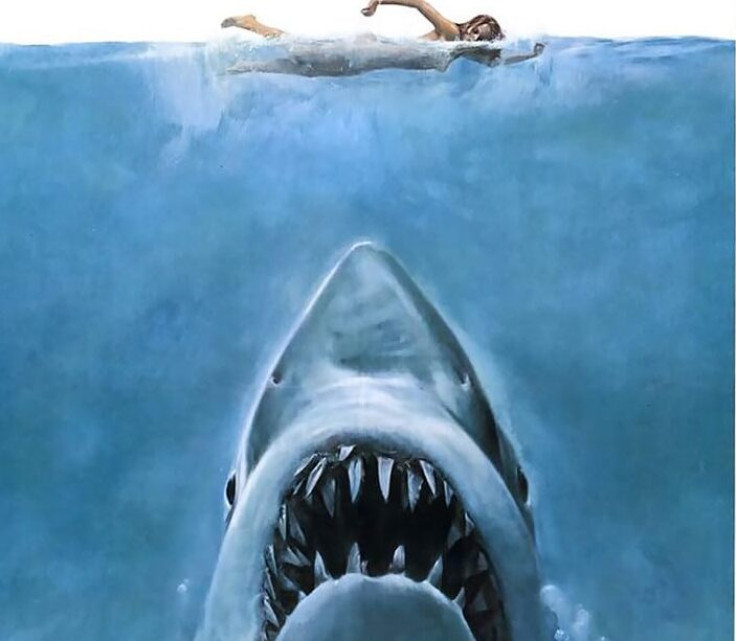
In the iconic “We’re gonna need a bigger boat” scene from Steven Spielberg’s 1975 classic, “Jaws,” Chief Brody, brilliantly played by Roy Scheider, reacts with shock and awe as the colossal great white shark emerges.
The tension builds as Brody, Hooper (Richard Dreyfuss), and Quint (Robert Shaw) are on their boat, sizing up their adversary. Brody, with a mix of fear and disbelief, utters the unforgettable line, “We’re gonna need a bigger boat.”
The line has since become one of cinema’s most quoted, solidifying its place in the cultural lexicon. Roy Scheider’s delivery is pitch-perfect, capturing the audience’s collective realization that the threat is far more significant than anticipated.
30.
Titanic (1997) – “I’m flying, Jack!” scene

James Cameron’s Titanic is remembered for its epic romance, and one of its most memorable scenes is when Jack (Leonardo DiCaprio) and Rose (Kate Winslet) stand at the bow of the ship. Against the backdrop of the open sea, Jack spreads his arms wide, and Rose joins him, exclaiming, “I’m flying, Jack!”
Leonardo DiCaprio and Kate Winslet’s chemistry and the grandeur of the Titanic itself make this scene unforgettable. It symbolizes the brief but intense love between the characters and has become an iconic image in film history.
The combination of romance, tragedy, and the film’s impressive production values cements this moment as a classic in cinematic storytelling.
29.
The Matrix (1999) – ‘Morpheus Offers Neo a Choice’ Scene

In the ‘Morpheus Offers Neo a Choice’ scene from “The Matrix” (1999), Laurence Fishburne’s Morpheus presents Keanu Reeves’ Neo with a life-altering decision.
Set against the backdrop of a disconcerting white space, Morpheus offers Neo the choice between a red pill and a blue pill. The red pill symbolizes an awakening to the harsh reality of the Matrix, while the blue pill represents a continuation of the comfortable illusion.
The scene’s minimalist setting, coupled with Fishburne’s authoritative delivery, amplifies the gravity of Neo’s decision, setting the stage for a mind-bending journey that reshaped the landscape of science fiction cinema. It is still memorable for its philosophical depth, introducing viewers to the concept of the Matrix and the fundamental choice between embracing reality and living in illusion.
28.
Pulp Fiction (1994) – ‘The Twist’ Scene

Quentin Tarantino’s Pulp Fiction is known for its non-linear narrative and unforgettable scenes. One such moment is the twist scene, where Vincent Vega (John Travolta) accidentally shoots Marvin (Phil LaMarr) in the face.
The sudden and shocking turn of events epitomizes Tarantino’s signature style. Travolta’s stunned reaction and the subsequent, casual cleanup by Jules (Samuel L. Jackson) make it both gruesome and darkly humorous. The scene, along with the film’s eclectic soundtrack and unique storytelling, solidifies Pulp Fiction as a cult classic.
27.
Raiders of the Lost Ark (1981) – ‘The Well of Souls’ Scene

In the iconic adventure film “Raiders of the Lost Ark,” directed by Steven Spielberg, the Well of Souls scene stands out as one of the most memorable movie scenes. Harrison Ford’s Indiana Jones, accompanied by Karen Allen’s Marion Ravenwood, discovers the Ark’s resting place in a perilous ancient chamber.
The scene is a masterclass in suspense, blending intense cinematography, intricate set design, and John Williams’ evocative score.
As Jones faces deadly snakes and the malevolent Nazis, the tension reaches a crescendo. The scene is etched into cinematic history for its masterful combination of action, humor, and Ford’s charismatic performance, showcasing the epitome of classic adventure storytelling.
26.
The Shawshank Redemption (1994) – ‘Red’s Parole Hearing’ Scene

In the ‘Red’s Parole Hearing’ scene from “The Shawshank Redemption” (1994), Morgan Freeman’s Red faces a parole board after years of incarceration. The scene serves as a microcosm of the film’s exploration of hope and redemption.
Freeman’s eloquent narration and nuanced performance convey a complex mix of regret, resilience, and a yearning for transformation. The parole hearing becomes a pivotal moment, symbolizing the institution’s skepticism toward rehabilitation.
It lays the emotional groundwork for the film’s overarching theme of personal redemption and the enduring power of hope in the face of institutional cynicism. The scene is a testament to Freeman’s exceptional acting and the film’s ability to capture the human spirit’s triumph over adversity.
25.
The Godfather (1972) – ‘The Baptism’ Scene

Francis Ford Coppola’s “The Godfather” features a mesmerizing and unforgettable baptism scene, blending religious symbolism with scenes of orchestrated violence. As Al Pacino’s Michael Corleone stands as the godfather of his sister’s child, a series of brutal assassinations occur under his command.
The juxtaposition of sacred rituals and criminal acts creates a chilling and thought-provoking atmosphere, showcasing the moral complexity of the film. Pacino’s intense portrayal and Coppola’s masterful direction make this scene a powerful representation of the film’s exploration of power, family, and morality.
24.
The Dark Knight (2008) – ‘The Joker’s Interrogation’ Scene

In the intense ‘The Joker’s Interrogation’ scene from “The Dark Knight” (2008), Christopher Nolan’s masterful storytelling reaches a crescendo as Batman, played by Christian Bale, confronts Heath Ledger’s Joker.
The tension is palpable as the two iconic characters engage in a psychological and physical battle of wits. Ledger’s Joker, with his anarchic charisma, taunts Batman, challenging the hero’s moral code. The scene is a cinematic tour de force, enhanced by the stark cinematography and Hans Zimmer’s haunting score.
Ledger’s mesmerizing performance, coupled with Bale’s brooding presence, elevates this moment into a defining clash of ideologies, showcasing the film’s exploration of chaos, morality, and the blurred lines between hero and villain in the gritty world of Gotham City.
23.
Casablanca” (1942) – The “La Marseillaise” Scene
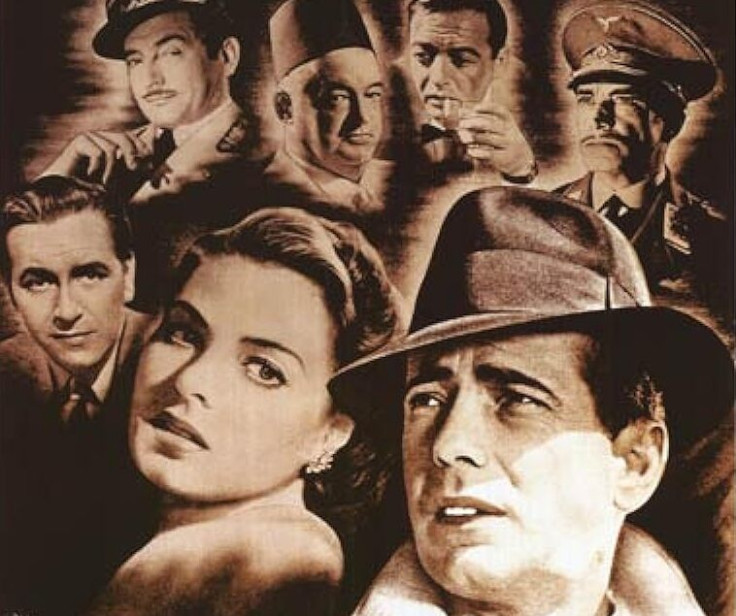
“Casablanca,” directed by Michael Curtiz, the “La Marseillaise” scene stands as a powerful symbol of resistance and patriotism. As the Nazis attempt to sing their anthem at Rick’s Café, the patrons defiantly drown them out with a rendition of the French national anthem.
The scene is a stirring portrayal of solidarity against oppression, with Ingrid Bergman and Humphrey Bogart delivering stellar performances. The emotional impact of this scene and its representation of courage and unity in the face of adversity contribute to “Casablanca’s” enduring status as a cinematic masterpiece.
22.
Jurassic Park (1993) – ‘The T-Rex Escape’ Scene

One of the most memorable scenes in “Jurassic Park” is the T-Rex escape. As the rain pours, the T-Rex emerges, creating an intense and suspenseful moment. The groundbreaking CGI and animatronics brought the dinosaur to life, making it a landmark moment in cinematic history.
The sheer terror and awe on the characters’ faces, particularly the kids in the car, mirror the audience’s reactions. Steven Spielberg masterfully crafted this scene, creating an enduring image of the power and danger of resurrected dinosaurs.
21.
E.T. the Extra-Terrestrial (1982) – ‘E.T. Phones Home’ Scene

The heartwarming scene in “E.T. the Extra-Terrestrial” when the titular character communicates with his home planet is etched in cinematic history. Henry Thomas’s touching performance as Elliott, coupled with the brilliant puppetry work for E.T., created a moment of pure magic.
Director Steven Spielberg masterfully blended emotion and fantasy, leaving an indelible mark on the hearts of audiences. The “E.T. phones home” line became an iconic quote, symbolizing the film’s emotional depth and its enduring impact on the sci-fi genre.
20.
The Silence of the Lambs (1991) – The “Quid Pro Quo” Scene

Anthony Hopkins delivers a chilling performance as Hannibal Lecter in “The Silence of the Lambs.” Director Jonathan Demme crafts a riveting confrontation between Jodie Foster’s FBI trainee Clarice Starling and Anthony Hopkins’ brilliant yet malevolent Dr. Hannibal Lecter.
Set in a dimly lit room, the dialogue becomes a psychological chess match as Lecter demands personal information from Starling in exchange for crucial details about the case. Hopkins’ unnerving performance, marked by his calm demeanor and piercing gaze, creates an atmosphere of suspense and unease.
The scene exemplifies the film’s mastery in building tension, showcasing the complexity of Lecter’s character, and earning Hopkins an Academy Award for his unforgettable portrayal of the iconic cannibalistic psychiatrist.
19.
The Shining (1980) – “Here’s Johnny!” Scene

In Stanley Kubrick’s horror masterpiece “The Shining” (1980), the “Here’s Johnny!” scene is a terrifying crescendo. Jack Nicholson’s descent into madness as Jack Torrance reaches its peak as he axes through a door, maniacally uttering the famous line.
The moment is a harrowing manifestation of psychological horror, with the claustrophobic setting amplifying the tension. Nicholson’s unhinged performance, combined with Kubrick’s meticulous direction, turns a seemingly simple act into an iconic cinematic nightmare.
The scene imbued with dread and insanity, captures the essence of the film’s exploration of the disintegration of the human psyche in the eerie, isolated Overlook Hotel, leaving an indelible mark on the horror genre.
18.
Back to the Future (1985) – ‘Marty McFly Plays Guitar’ Scene

In the delightful ‘Marty McFly Plays Guitar’ scene from “Back to the Future” (1985), Michael J. Fox’s Marty McFly rocks the past with an electrifying performance at his parents’ high school dance. Strapped with a futuristic guitar, Marty injects 1950s Hill Valley with a dose of Chuck Berry’s “Johnny B. Goode.”
The scene is a jubilant collision of eras, symbolizing the film’s time-travel premise and encapsulating Marty’s cool charisma.
Fox’s energetic stage presence and the infectious enthusiasm of the onlookers, including his parents, create a moment of pure cinematic joy. This iconic scene not only showcases Marty’s musical prowess but also contributes to the film’s timeless charm and cultural impact.
17.
The Princess Bride (1987) – ‘The Storming of the Castle’ Scene

Rob Reiner’s “The Princess Bride” is known for its wit and charm, and the storming of the castle scene encapsulates the film’s adventurous spirit. The ‘Storming of the Castle’ scene is a swashbuckling crescendo that encapsulates the film’s whimsical blend of romance and adventure.
The sequence sees the daring rescue mission led by Westley, played by Cary Elwes, to save Princess Buttercup, portrayed by Robin Wright, from the clutches of the nefarious Prince Humperdinck.
The scene is a symphony of swordplay, humor, and camaraderie, with Inigo Montoya and Fezzik adding their unique flair to the action. Marked by witty banter and memorable one-liners, this climactic moment not only showcases the film’s satirical fairy-tale tone but also solidifies “The Princess Bride” as a timeless classic cherished for its charm and wit.
16.
The Matrix (1999) – ‘Neo Dodges Bullets’ Scene

In “The Matrix” (1999), the ‘Neo Dodges Bullets’ scene stands as a groundbreaking moment in cinematic history. Directed by the Wachowskis, this visually astonishing sequence showcases the character Neo, played by Keanu Reeves, discovering his extraordinary abilities within the simulated reality of the Matrix.
As Agent Smith and his henchmen unleash a barrage of bullets, Neo defies the laws of physics with mesmerizing agility, bending backward to evade the projectiles. The scene’s innovative use of “bullet time” photography, where time seemingly slows down, set a new standard for special effects.
15.
Jerry Maguire (1996) – The “You had me at hello” Scene

Cameron Crowe’s “Jerry Maguire” is known for its romantic moments, and the “You had me at hello” scene is a standout. Starring Tom Cruise as Jerry Maguire and Renée Zellweger as Dorothy Boyd, the scene unfolds as Jerry, fueled by genuine vulnerability, confesses his true feelings to Dorothy.
The simplicity of the line, “You had me at hello,” encapsulates a profound shift in their relationship, transcending mere romantic clichés. Zellweger’s earnest response and Cruise’s charismatic delivery imbue the moment with authenticity.
The iconic scene not only became a romantic touchstone but also contributed to the film’s enduring legacy, symbolizing the power of sincerity and connection in the world of love.
14.
The Wizard of Oz (1939) – The “There’s no Place Like Home” Scene

In “The Wizard of Oz” (1939), the poignant “There’s no place like home” scene marks the emotional climax of Dorothy’s fantastical journey. Judy Garland’s iconic portrayal of Dorothy Gale reaches its pinnacle as she clicks her ruby slippers together, repeating the mantra that encapsulates her yearning for the familiar.
The Technicolor brilliance of Oz gives way to the sepia tones of Kansas, emphasizing the transformative power of home and the value of the ordinary. Directed by Victor Fleming, this scene transcends its fantastical setting, resonating universally with audiences.
The simplicity of the message endures, making it a timeless reminder that, no matter the adventures we seek, the heart longs for the comforting embrace of home.
13.
The Silence of the Lambs (1991) – ‘Clarice meets Hannibal Lecter’ Scene

In another pivotal scene from “The Silence of the Lambs,” Clarice Starling first meets Hannibal Lecter. Jodie Foster’s portrayal of the young FBI agent and Anthony Hopkins’ mesmerizing performance as the brilliant yet deranged Hannibal create a palpable tension.
The claustrophobic atmosphere of the prison and the psychological chess match between the characters make this scene unforgettable. Hopkins’ chilling line, “A census taker once tried to test me. I ate his liver with some fava beans and a nice Chianti,” became one of the most iconic quotes in cinematic history.
12.
Psycho (1960): Shower Scene
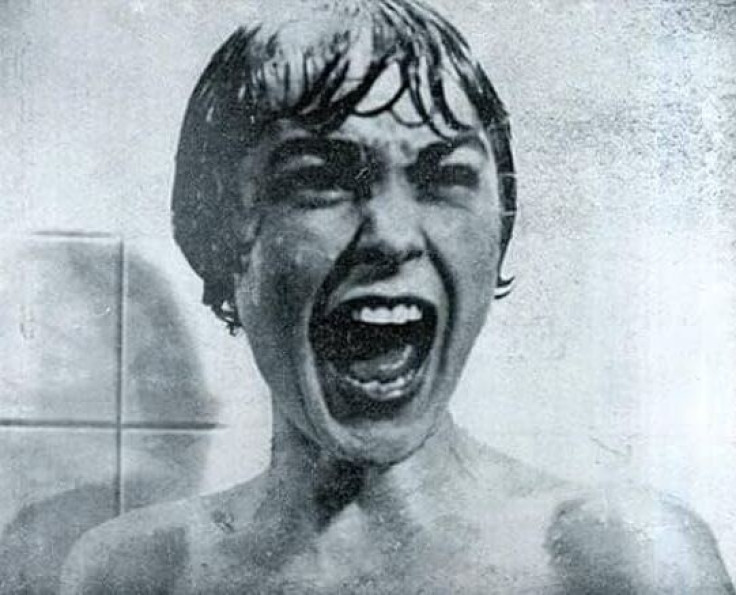
Alfred Hitchcock’s “Psycho” (1960) revolutionized horror cinema, and its iconic ‘Shower Scene’ remains etched in film history. In a jarring departure from narrative conventions, Janet Leigh’s Marion Crane meets a shocking demise as Anthony Perkins’ Norman Bates, dressed as his mother, wields a knife.
Hitchcock’s masterful direction, coupled with Bernard Herrmann’s screeching strings in the score, creates a visceral, unsettling experience. The rapid cuts and innovative editing amplify the brutality without explicit violence, showcasing Hitchcock’s psychological prowess.
The scene not only subverted audience expectations but also set a benchmark for suspenseful filmmaking, influencing generations of filmmakers and solidifying “Psycho” as a seminal work in the horror genre.
11.
The Sound of Music (1965): Opening Scene

Directed by Robert Wise and starring Julie Andrews and Christopher Plummer, The Sound of Music opens with an awe-inspiring panoramic view of the Austrian Alps. Andrews, as Maria, spins on a mountaintop, singing the titular song. The scene has become an enduring symbol of the film’s beauty and the magic of musical cinema.
The opening sets the stage for the heartwarming narrative that follows, earning The Sound of Music a special place in the hearts of audiences worldwide and solidifying it as one of the most beloved musicals in cinematic history.
10.
Titanic (1997): Door Scene

The “Door Scene” from James Cameron’s “Titanic” (1997) has become an iconic and often debated cinematic moment. Leonardo DiCaprio’s Jack and Kate Winslet’s Rose find themselves clinging to a piece of debris in the frigid waters after the ship’s tragic sinking.
The scene has sparked discussions about the physics of buoyancy and survival, with the door serving as a makeshift life raft. While Jack ultimately succumbs to the cold, Rose survives. The poignant moment has become a symbol of love, loss, and sacrifice in the face of disaster, leaving an indelible mark on popular culture and making “Titanic” a classic in the realm of epic romance.
9.
When Harry Met Sally (1989): “I’ll Have What She’s Having” Scene

Directed by Rob Reiner, When Harry Met Sally features an unforgettable comedic scene in a deli where Meg Ryan’s character fakes an orgasm. The onlooker’s reaction, immortalized by Estelle Reiner’s line “I’ll have what she’s having,” adds a humorous touch. The chemistry between Ryan and Billy Crystal, coupled with Nora Ephron’s witty screenplay, makes this scene a classic moment in romantic comedies, contributing to the film’s enduring popularity.
8.
Breakfast at Tiffany’s (1961): Tiffany’s Scene

In “Breakfast at Tiffany’s” (1961), the iconic Tiffany’s scene captures the essence of Audrey Hepburn’s timeless elegance as Holly Golightly. Directed by Blake Edwards, the moment unfolds early in the film as Holly, clad in a black Givenchy dress, stands outside the Tiffany & Co. store on Fifth Avenue, munching on a pastry and gazing longingly at the luxurious jewelry in the window.
Henry Mancini’s enchanting score, coupled with Hepburn’s portrayal of the whimsical and elusive socialite, creates a cinematic tableau that epitomizes glamour and desire. The scene has become synonymous with the film, symbolizing Holly’s quest for sophistication, independence, and a sense of belonging in the bustling heart of New York City’s high society.
7.
Forrest Gump (1994): “Run, Forrest, Run!” Scene

In the iconic “Run, Forrest, Run!” scene from “Forrest Gump” (1994), director Robert Zemeckis crafts a defining moment in the life of the lovable titular character, portrayed by Tom Hanks. Set against the backdrop of young Forrest’s leg braces being torn off by bullies, the scene unfolds as he discovers his incredible talent for running.
The simplicity of the line, delivered by Jenny, played by Robin Wright, transforms into a mantra that echoes throughout the film. The moment not only marks the beginning of Forrest’s extraordinary journey but also encapsulates the film’s themes of resilience, optimism, and the unpredictable nature of destiny. Tom Hanks’ earnest performance and the uplifting score contribute to making this scene an enduring symbol of triumph over adversity.
6.
Say Anything… (1989): “I Love You” Scene

Cameron Crowe’s Say Anything… features an iconic romantic moment when John Cusack’s character, Lloyd Dobler, holds a boombox above his head playing Peter Gabriel’s “In Your Eyes” to profess his love to Ione Skye’s Diane.
The heartfelt scene has become a symbol of romantic gestures in cinema. Cusack’s earnest performance and the film’s timeless depiction of young love contribute to the enduring impact of this scene.
5.
The Room (2003): “You’re Tearing Me Apart, Lisa!” Scene

In the cult classic “The Room” (2003), Tommy Wiseau’s eccentric drama, the “You’re tearing me apart, Lisa!” scene stands out as a hilariously melodramatic highlight. Wiseau, who also directed and wrote the film, delivers this line with intense emotion as Johnny, expressing heartbreak and betrayal.
The scene’s overwrought dialogue, coupled with Wiseau’s unique acting style, has become a legendary moment in the realm of so-bad-it-good cinema. While unintentionally comedic, the scene has garnered a cult following and is frequently quoted by fans. Its absurdity contributes to the film’s status as a cult classic and a source of entertainment for those who revel in the quirks of unconventional filmmaking.
4.
Schindler’s List (1993): The Little Girl in Red Scene

In “Schindler’s List” (1993), Steven Spielberg’s powerful Holocaust drama, the ‘Little Girl in Red’ scene is a haunting cinematic masterstroke. Filmed in black and white, the scene stands out for its poignant use of color: a solitary red-coated girl traversing the Warsaw Ghetto.
Representing innocence amid atrocities, the image symbolizes the selective blindness to suffering. The stark visual metaphor, based on the true stories of Holocaust survivors, is emotionally resonant.
The scene underscores the film’s exploration of humanity in the face of unspeakable cruelty and remains an indelible testament to Spielberg’s storytelling prowess and the tragedy of the Holocaust.
3.
Gone with the Wind (1939) – “Frankly, my dear, I don’t give a damn” Scene

In the iconic scene from “Gone with the Wind,” the tension between Rhett Butler and Scarlett O’Hara reaches its climax. As Scarlett desperately implores Rhett not to leave her, he delivers the unforgettable line, “Frankly, my dear, I don’t give a damn.”
The moment encapsulates Rhett’s emotional detachment, signaling the end of their tumultuous relationship. The line resonates with the film’s larger themes of love, loss, and the inevitable changes brought about by the Civil War. Rhett’s indifference becomes a poignant statement on the irreparable damage done by the war, leaving Scarlett to grapple with the consequences of her choices.
2.
The Godfather (1972) – “I’m gonna make him an offer he can’t refuse” Scene

“I’m gonna make him an offer he can’t refuse” is a line uttered by Don Vito Corleone in “The Godfather.” The scene defines the essence of the Corleone family’s power dynamics and the ruthlessness with which they operate.
The line captures the essence of Vito’s strategy in dealing with adversaries, employing a mix of power, persuasion, and intimidation. It showcases the intricate blend of business and personal relationships within the mafia world. The utterance becomes a symbol of the Corleone family’s influence and sets the tone for the film’s exploration of power, loyalty, and the consequences of a life immersed in organized crime.
1.
1. The Lion King (1994): ‘Simba’s presentation on the Pride Rock’ Scene

In the iconic scene from Disney’s “The Lion King” (1994), Simba’s presentation on Pride Rock marks a pivotal moment in the film. As Rafiki holds up the young lion cub, the Pride Lands are introduced to their future king. The majestic presentation symbolizes hope, continuity, and the Circle of Life.
The swelling musical score, “Circle of Life,” complements the grandeur of the moment, enhancing the emotional impact. Simba’s birth signifies the promise of a new era, yet it also foreshadows the challenges he will face. The scene encapsulates themes of responsibility, destiny, and the interconnectedness of all living things, setting the stage for Simba’s transformative journey from cub to king.
Wrapping up
In this exploration of the 40 most memorable scenes in film history, we traverse the rich tapestry of human experience encapsulated in the art of cinema. These scenes, with their emotional potency and cultural impact, serve as beacons that guide us through the vast sea of stories.
From moments of jubilant celebration to heart-wrenching farewells, these scenes remind us of the enduring power of film to connect, inspire, and resonate across time. As we celebrate the magic of these cinematic gems, we recognize that they are not just scenes but fragments of a larger mosaic, shaping our collective memory and enriching the tapestry of human storytelling.
[ad_2]
Source link











